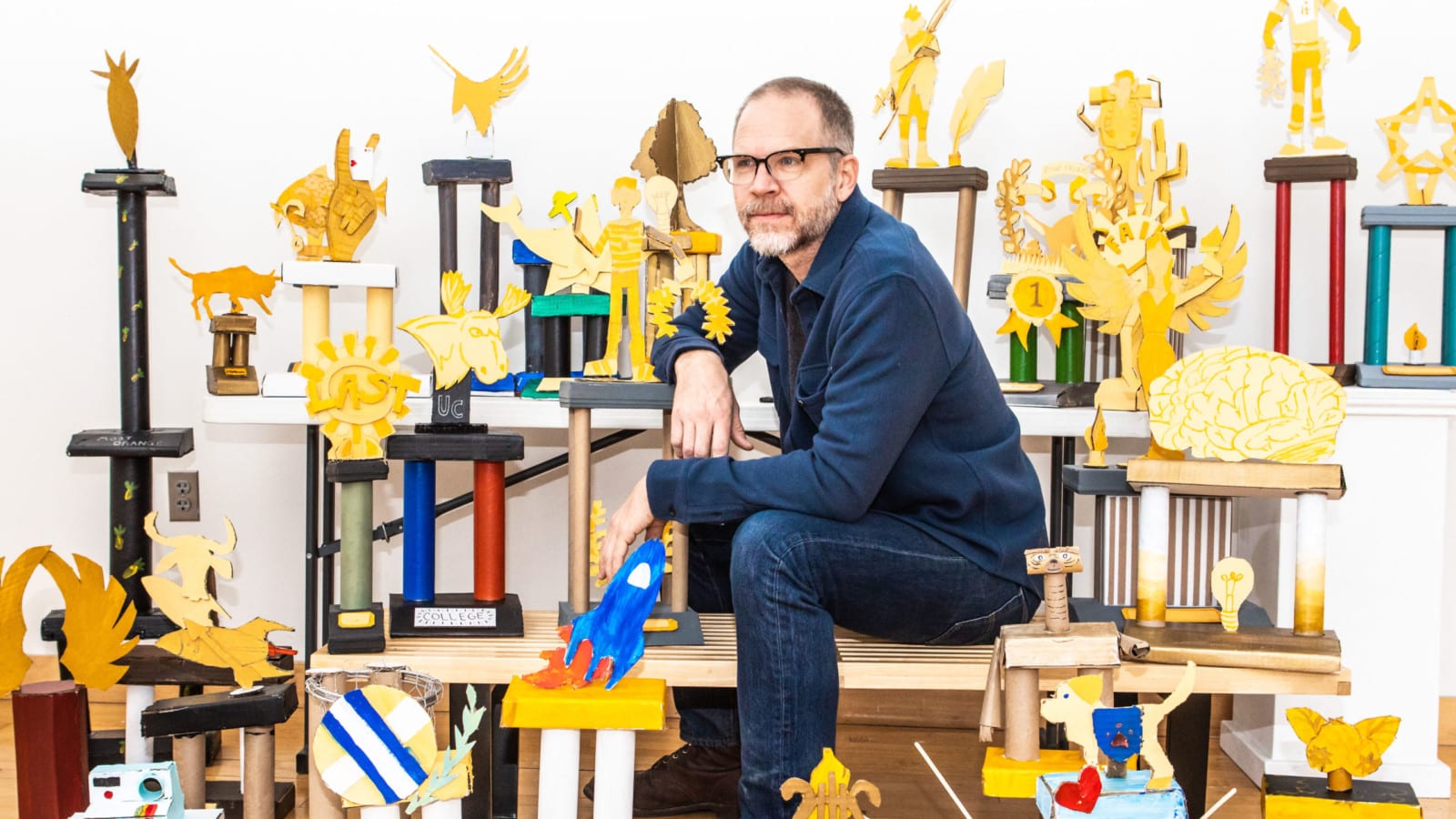During a six-day residency as part of the Grum Project, a visiting artist series funded by a generous alumna, Los Angeles-based artist Kiel Johnson worked with students to create a collection of unique cardboard trophies that celebrated victories both personal and humorous. “I did the dishes” reads the base of a mock-up of one trophy, the pedestal bearing a glowing dish drainer filled with flatware and plates. “I stayed hydrated,” notes another, capped with a half-full Williston water bottle. The project was meant to evoke the classic high school trophy case, but with a twist, Johnson said, in that the awards are not necessarily for athletic prowess, but instead reward unlikely and often under-appreciated qualities. “I like to share the joy of making,” he said.
The entire Williston community assembled for a talk by Johnson on January 24, when he shared a slideshow and videos of work he’s done over a career that began when he was 6 years old. “I always knew I wanted to be an artist,” he said. “I’m somebody who has followed his passion. I’m following my dream, my way. Life is short. Don’t be following other people’s dreams. If you pursue your dream 150 percent, life will open up to you.”
To illustrate this idea, Johnson told a story about how his career progressed. He always loved drawing and making things. One day he decided to make a drawing of everything he owned (not to scale, he joked). People loved it, and he continued in that vein, drawing every stitch of clothing he owned, then all his girlfriend’s clothes, then assemblages of cacti, chairs, cars. He started building cities out of cardboard, including 1,000 cardboard cars no bigger than an inch. The ride-share firm Uber saw this work and asked him to make an advertisement. He created a larger city for that project, and then commissions for Wal*Mart, and Disney XD rolled in.
He worked with the Los Angeles Philharmonic to make 2-D musical instruments that visitors could play with. With groups of students he constructed a prairie schooner wagon, a model of William Randolph Hearst’s yacht the Oneida, an airplane. He constructed a paper boom box with paper cassette tapes—because he missed the paraphernalia associated with music, now that streaming has made it all obsolete. He crafted violins, a crazy pipe organ, a banjo, an accordion. “I love that musical instruments are the way they are because we are the way we are.”
With visitors to the Getty Villa and the Getty Center in LA, Johnson has created a merman, a Viking ship, a three-headed dog, and a giant snake.
“You don’t need expensive tools to be an artist,” he said. “A leads to B. B leads to C, and then you have a body of work.”

